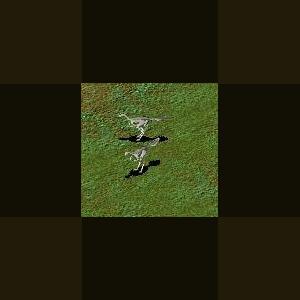About This File
Chirostenotes
Chirostenotes (pronounced KIE-ro-STEN-o-teez, named from Greek 'narrow-handed') was an oviraptorosaur from the late Cretaceous (80 million years ago) of Alberta, Canada.
It was characterized by a beak, long arms ending in powerful claws, long, slender toes and a tall, rounded cassowary-like crest or casque. Chirostenotes was probably an omnivore or herbivore, although the beak is not as heavily constructed as in the Asian Oviraptoridae. The type species is Chirostenotes pergracilis. A smaller species, C. elegans, has also been named from Alberta,[1] although it probably belongs to the closely-related Elmisaurus.[2] A large skeleton from the Horseshoe Canyon Formation has been referred to Chirostenotes pergracilis, although it may represent a new species. The first Chirostenotes was found in the Dinosaur Park Formation of Canada, which has yielded the most dinosaurs of any Canadian formation.
In life, the animal was about 9.5 feet (2.9 m) long and 3 feet (0.91 m) tall at the hips. It had an estimated weight of about 110 pounds. It probably ate small reptiles and mammals, as well as plants, eggs and insects.
This dinosaur has a confusing history. It was given its first name, Chirostenotes, when a pair of hands was found in 1924. The feet were then found, in 1932 and given the name Macrophalangia, meaning 'large toes'. Later, they were correctly recognized as part of a meat-eating dinosaur but no-one was sure if they were from the same species. In 1936, its jaws were found and given the name Caenagnathus, meaning 'recent jaw' (the family of oviraptorosaurs containing Chirostenotes, the Caenagnathidae, still carries this name); they were first thought to be those of a bird. In 1988, a specimen from storage since 1923 was discovered and studied. This fossil helped link the other discoveries into a single dinosaur. Since the first name applied to any of these remains was Chirostenotes, this is the only name that is recognized as valid.
Also, a set of jaws with strange teeth were originally thought to be part of Chirostenotes but, now that it is known that Chirostenotes was a toothless oviraptorosaur, the jaws have been renamed Ricardoestesia and are from an otherwise unknown dinosaur.



Recommended Comments
There are no comments to display.
Create an account or sign in to comment
You need to be a member in order to leave a comment
Create an account
Sign up for a new account in our community. It's easy!
Register a new accountSign in
Already have an account? Sign in here.
Sign In Now